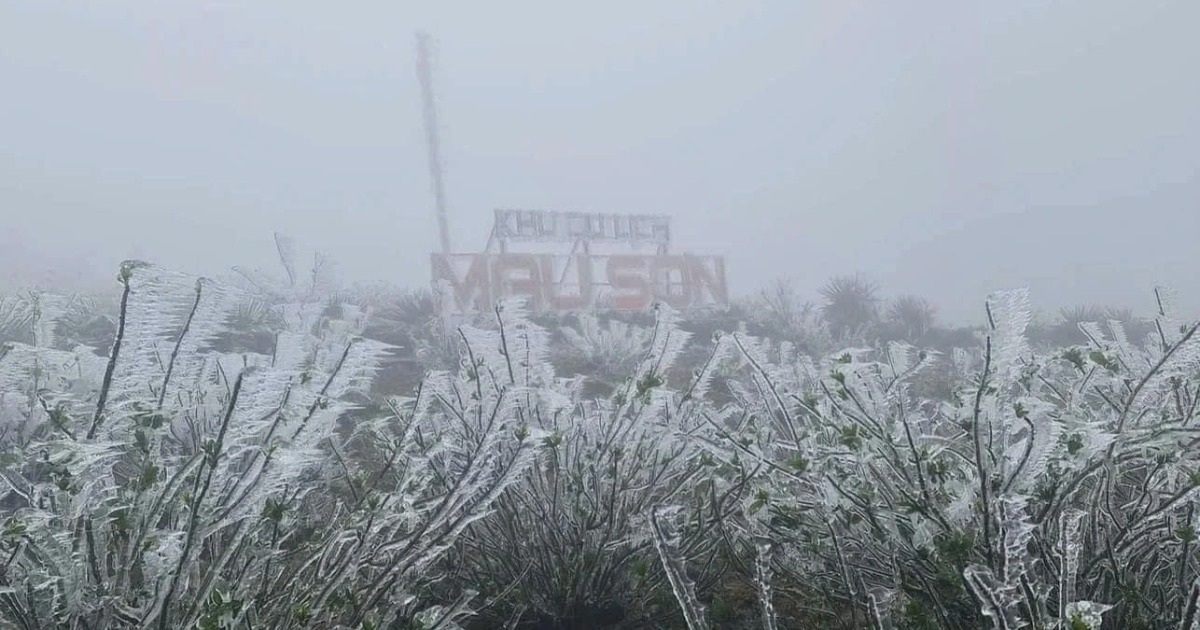On February 9, the temperature at Mount Mau Son in Lang Son was 1°C, while other highland areas such as Pha Din ( Dien Bien), Mu Cang Chai (Son La), Sapa (Lao Cai), Dong Van (Ha Giang), and Tam Dao ( Vinh Phuc) ranged from 4-5°C.
In Hanoi, the temperature this morning was around 12°C.
According to meteorological authorities, the severe cold spell affecting the northern region and parts of North Central Vietnam is expected to last until February 10.
 Northern Vietnam Experiencing Cold Temperatures RecentlyCold temperatures have affected many places in northern Vietnam recently (Nguyen Minh Chuyen).
Northern Vietnam Experiencing Cold Temperatures RecentlyCold temperatures have affected many places in northern Vietnam recently (Nguyen Minh Chuyen).
Meteorological authorities predict that on February 10, the northern region and North Central Vietnam will still be influenced by cold air, with chilly nights and mornings but sunny afternoons.
From the night of February 10 to the morning of February 11, there may be light rain in some areas of the northern region, along with early morning mist and scattered light fog. From February 12 to February 16, southern Son La, Hoa Binh, and northeastern areas may experience light rain, drizzle, and scattered fog in the early morning and evening. The weather will remain cold, with some mountainous areas experiencing severe cold.
In the North Central and Mid-North regions, it will be cold from the night of February 10 to February 12. From February 13, mornings and evenings will be cold, but afternoons will be sunny.
Other areas may experience scattered afternoon showers and thunderstorms, with sunny days; in the South Central region, from February 10 to 14, there may be scattered showers and thunderstorms at night.
Mr. Nguyen Van Huong, Head of the Weather Forecasting Department at the National Center for Hydro-Meteorological Forecasting, stated that the humid southwesterly monsoon will occur from late February and continue through April.
These humid spells typically last 3-5 days, sometimes extending up to a week. This phenomenon ends or changes only when the northeast monsoon returns.
Mr. Huong noted that according to climatic patterns, February is the peak of winter, so cold air continues to significantly affect the country.
Starting late February, dry air will be replaced by moist air, leading to light rain, drizzle, and fog in northern provinces, with chilly nights and mornings.
“The humid season will commonly affect the northern region, especially Hanoi, from late February to April each year. During this period, humidity can rise above 85%, accompanied by drizzle and fog, causing dampness in homes, buildings, and essential items,” Mr. Huong said.
Humid weather disrupts daily life and negatively impacts health. High humidity creates an environment conducive to respiratory illnesses and allergies, particularly affecting children and the elderly.
Additionally, humid conditions facilitate the proliferation of pests and diseases in spring crops, especially mold and aphids.
Source link: https://dantri.com.vn/xa-hoi/ha-noi-va-nhieu-noi-o-mien-bac-hung-nang-tu-trua-va-chieu-mai-20250209170313334.htm


